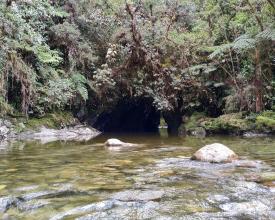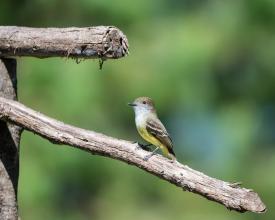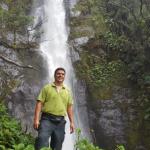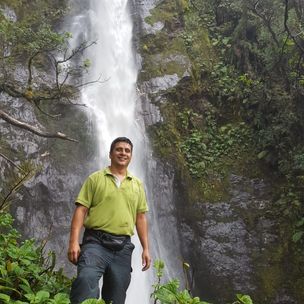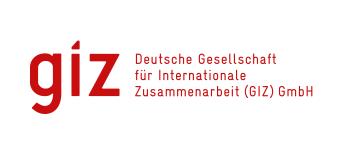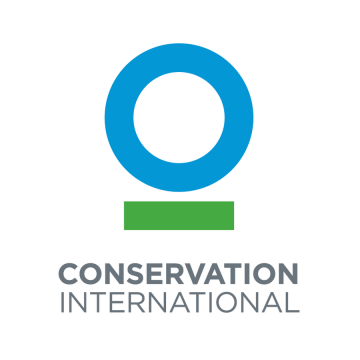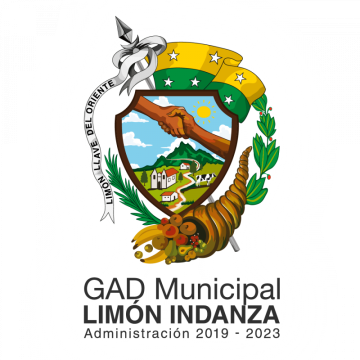
Municipal management and private enterprise: together for the environmental sustainability of the Ecuadorian Amazon.
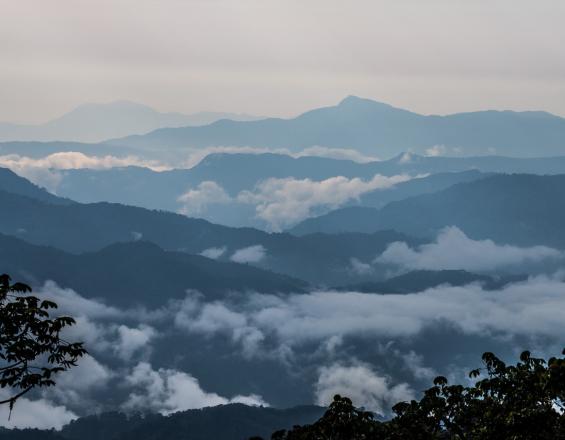
The Tinajillas Río Gualaceño Municipal Ecological Conservation Area was created in 2014 under Municipal Ordinance to conserve 31,959.35 ha of tropical rainforest at the entrance to the Ecuadorian Amazon. The area is managed by the Municipal Autonomous Decentralized Government (GAD) of Cantón Limón Indanza and is part of the cantonal development model focused on articulating local management with environmental sustainability. This area represents a process with high institutional management and diversified initiatives for financial sustainability. It aims to conserve the ecological integrity of the ecosystems, biodiversity and scenic beauty of the landscape for sustainable use through environmentally friendly economic initiatives. The site is also strategic at the regional level because it is part of the Sangay Podocarpus biological corridor, which in turn is part of the Abiseo-Cóndor-Kutucú Conservation Corridor.
Context
Challenges addressed
The challenges facing the area are the following:
- Prevent mining concessions and stop their activities.
- Move towards participatory governance to make conservation strategies and their implementation more effective.
- Know the land tenure situation in order to resolve associated problems before the area enters the National System of Protected Areas.
- Disseminate and promote the adoption of good sustainability practices in the economic activities developed in the territory.
- Achieve 100% financing of the activities programmed in the management plan for its conservation.
Location
Process
Summary of the process
The institutional framework established in this project is key to maintaining forest and biodiversity protection processes. This process is supported by the sustainability of the political and administrative management of the area led by the local authority.
Financial sustainability makes it possible to maintain the programs and the administrative operation of the actions proposed through the previous axes.
Governance and participation are key elements in the implementation of strategies and actions aimed at the area's conservation. The involvement of local stakeholders or citizen participation, in this sense, focuses on conservation through daily practices in the territory in order to achieve the proposed objectives.
The combination of these 4 blocks guarantees the permanence of the conservation process.
Building Blocks
Institutionality
The Decentralized Autonomous Government - GAD - of Limón Indanza has generated a series of legal and regulatory instruments to strengthen and sustain the management of the conservation area. Therefore, this management is organically linked to the Territorial Development and Management Plan(PDOT), has its own management plan, and is part of the organic structure of the municipality. It also has an ordinance that establishes the regulations for its management and operation.
Enabling factors
There is a strong political will to include in the public policy agenda and the management of the conservation area in question.
Lesson learned
The political will of decision-makers is fundamental to achieve the institutionalization and permanence of protected area management and conservation processes.
Financial sustainability
The funds for managing the conservation area are guaranteed because the municipality annually allocates resources for current expenses (personnel and operations) and investment expenses (programs), in addition to contributions from cooperation and environmental compensation funds.
If this trend continues, the area's management has sufficient funds to be able to sustain itself economically over time.
Enabling factors
There is a strong interest on the part of civil society organizations and institutions to conserve protected areas.
Lesson learned
The allocation of the company's own resources and the proper management of funds from national and international cooperation were essential to achieve the established goals.
Governance
Participatory governance is a dynamic process under constant review and consolidation.
Currently, there are significant positive results in terms of consultation and the definition of management strategies. The aim is to strengthen the participation ofstakeholders in active and consensual decision-making.
Enabling factors
There is a good articulation of those involved in the project at the local level regarding the sustainability of the processes to ensure participatory governance.
Lesson learned
The participation of local stakeholders, especially citizens, from the beginning of the management process favored the governance, implementation and enforcement of the protected area's conservation proposals.
Participation
There is an important level of community involvement in the definition and management of sustainable development proposals due to the level of economic impact that this has on the lives of families.
However, it is important to strengthen this axis in order to guarantee the conservation of the protected area.
Enabling factors
There is a high degree of interest and involvement on the part of the community, due to the visibility of the positive impacts of this conservation initiative in the daily life of the inhabitants.
Lesson learned
It is necessary to encourage community ownership and empowerment processes in the management of the protected area.
This consolidates and encourages the involvement of local stakeholders.
Impacts
One of the positive impacts could be the conclusion of economic agreements with national private companies to offset the carbon footprint. This strategy in particular is awakening the interest of several companies to become part of the co-management of this emblematic area, thus generating awareness and corporate socio-environmental responsibility. The management of the area has also made it possible to promote the economic activities carried out in the canton, incorporating the environmental variable. This has made it possible to consolidate environmental awareness among the inhabitants and ensure that productive activities, such as cattle ranching and tourism, are more sustainable.
Beneficiaries
Inhabitants of the canton due to the conservation of water sources, as well as the surrounding communities through its Environmental Education Program.
This has begun to generate genuine income thanks to the development of new activities.
Sustainable Development Goals
Story
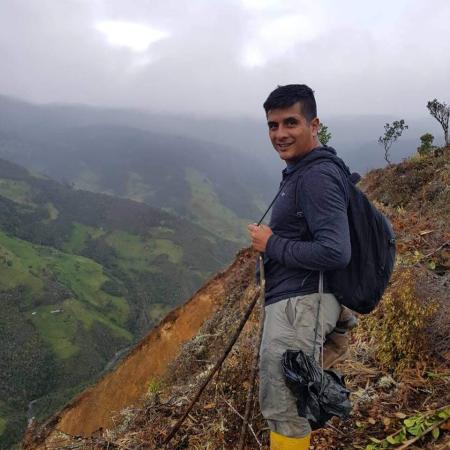
The Autonomous Decentralized Government of Limón Indanza has been committed to conservation efforts thanks to the participation of various stakeholders such as academia, private companies, the local population, decision makers, and organizations of various kinds.
Once the discourse on the area's conservation was strengthened at the local level, the GAD saw the need to elevate these efforts to international spaces through alliances with organizations such as IUCN, ICLEI, GIZ, NCI, CI, among others. These alliances helped capture the interest of private companies in the conservation of Tinajillas. This interest in conservation has also been internalized in the policies, discourse and actions of private companies. For example, we have companies that have committed to using more environmentally friendly machinery and are making every effort to reduce their carbon footprint.
The challenge that was set for Tinajillas at the beginning was to establish itself as an area that can be sponsored by various actors from different sectors at a local, national and international level. We are pleased to say that this challenge was met and that we are now a milestone in the National System of Protected Areas of Ecuador as well as an international reference. All this has meant an enormous effort and work of several years for the GAD and, undoubtedly, it has had its rewards.
The systematization of this case was carried out by the International Union for Conservation of Nature. The case was highlighted in a survey on experiences in protected area management and other local conservation measures administered by Autonomous Decentralized Governments in Ecuador, conducted by ICLEI South America in 2018 (http://sams.iclei.org/es/que-hacemos/proyectos-en-ejecucion/areas-protegidas-locales/ecuador.html).
The actions of IUCN and ICLEI took place within the scope of the regional project Protected areas and other area-based conservation measures at the local government level, and had the financial support of the "Deutsche Gesellschaft für Internationale Zusammenarbeit" (GIZ). The regional project is implemented by the Ministries of Environment of Brazil, Colombia, Ecuador and Peru, and GIZ, in cooperation with ICLEI and IUCN. The regional project is supported by the German Federal Ministry for the Environment, Nature Conservation and Nuclear Safety (BMU) within the scope of the International Climate Initiative (IKI).


